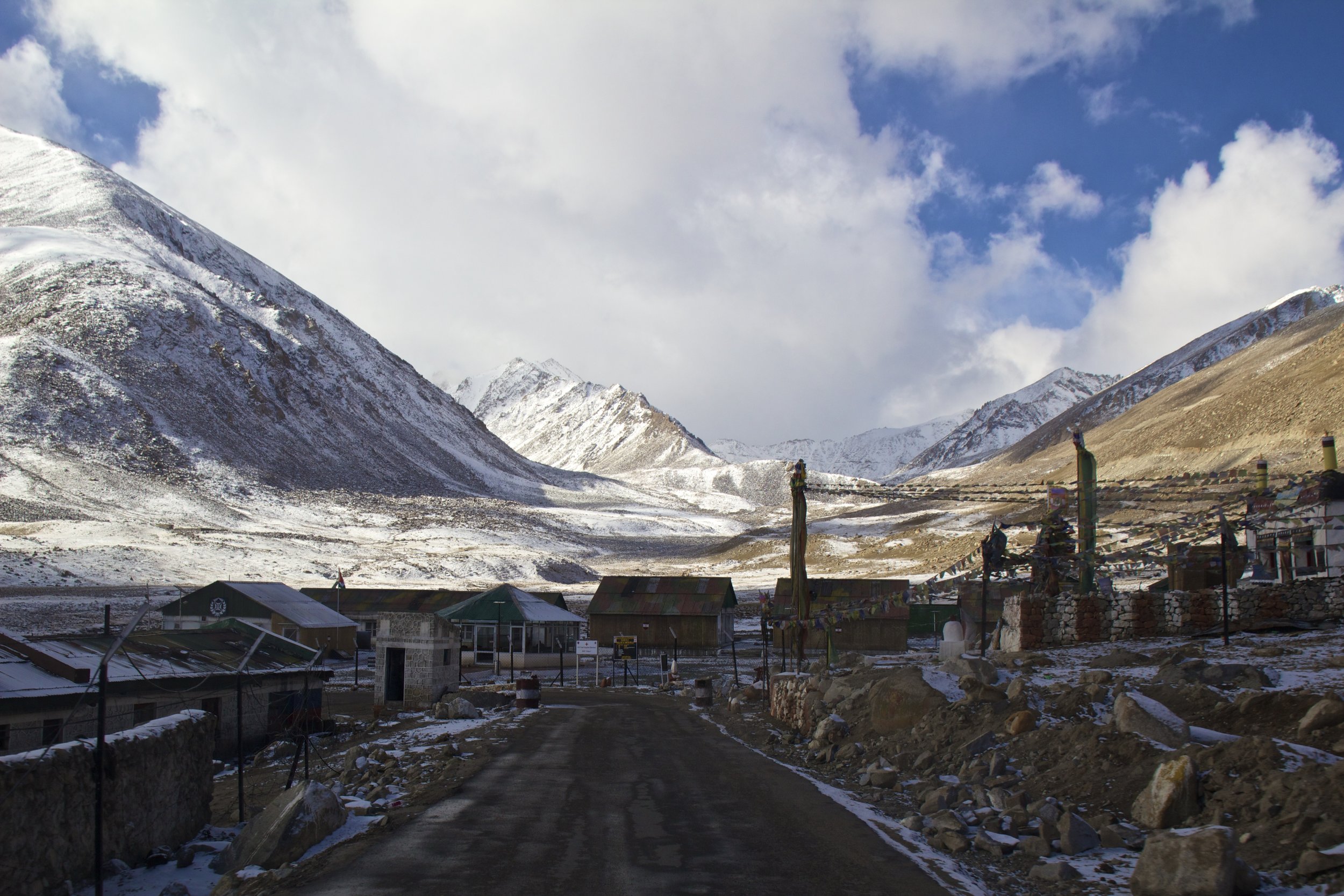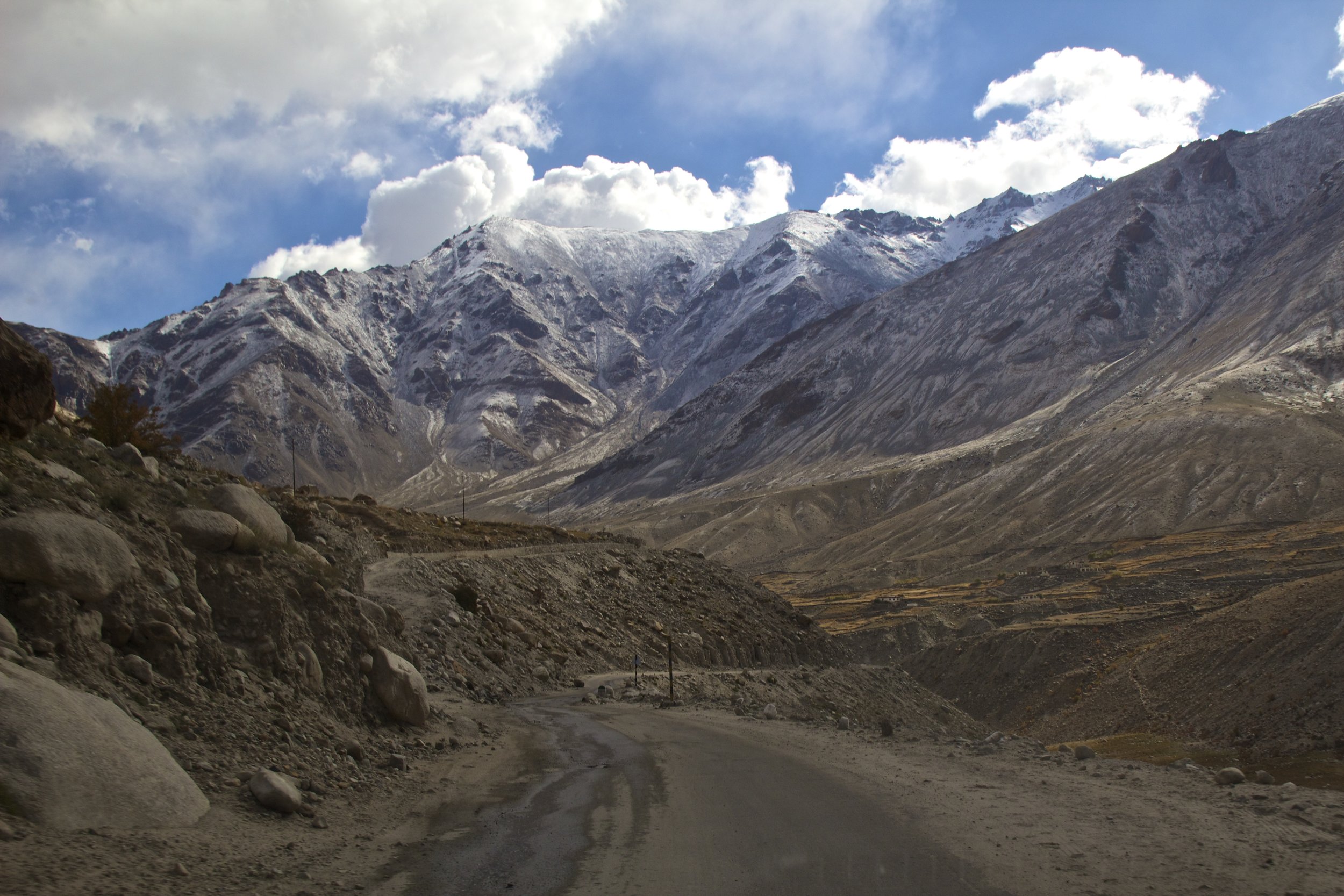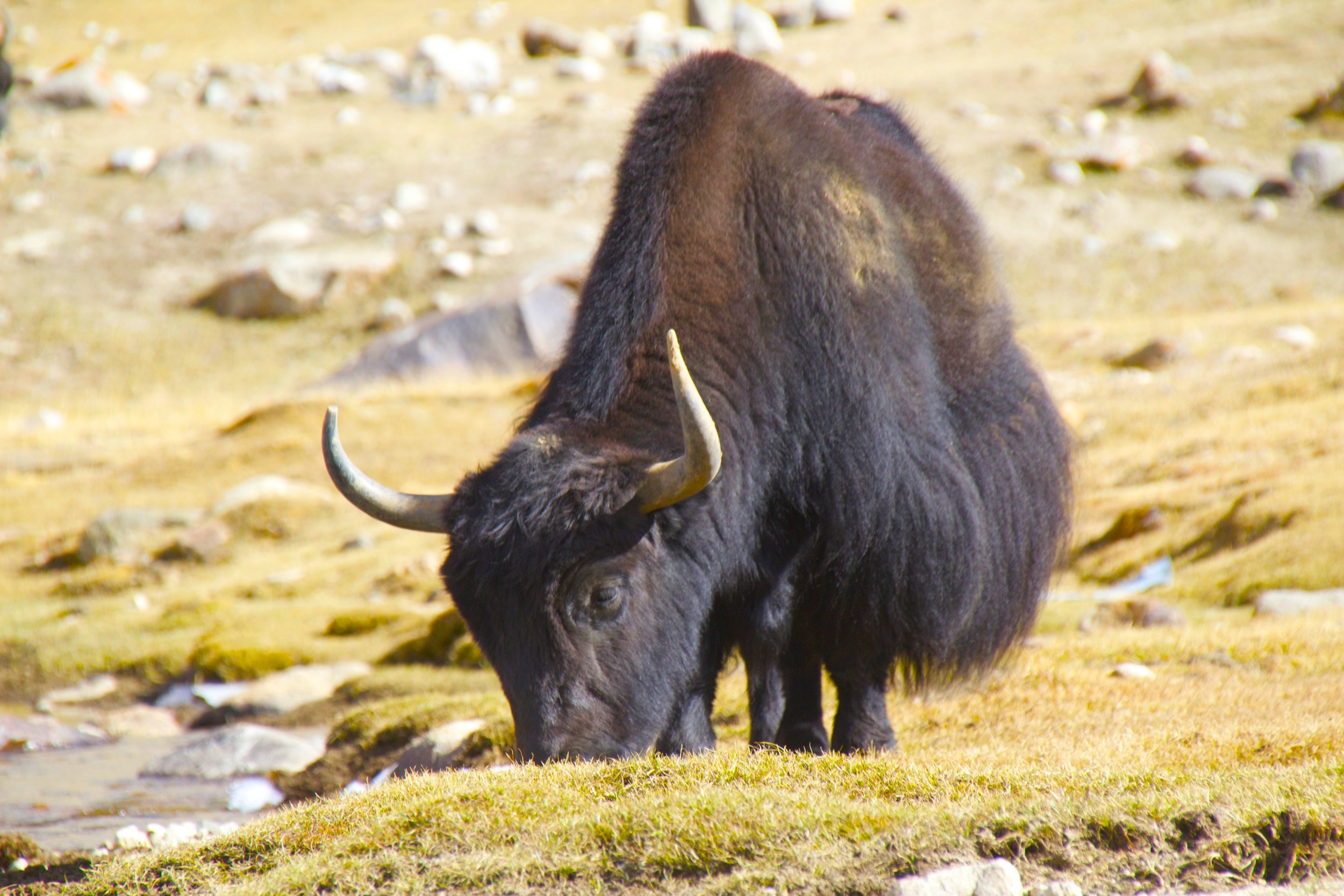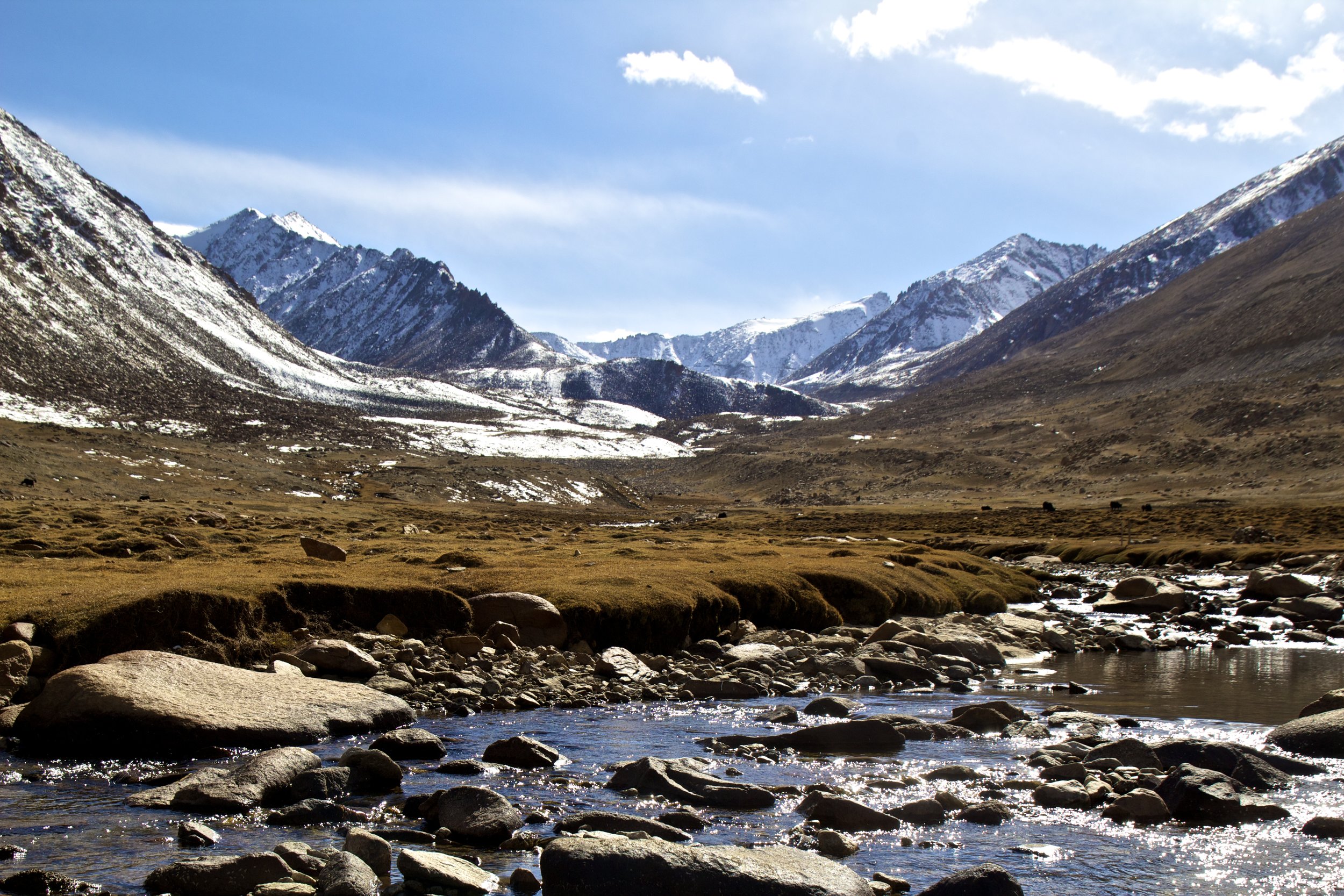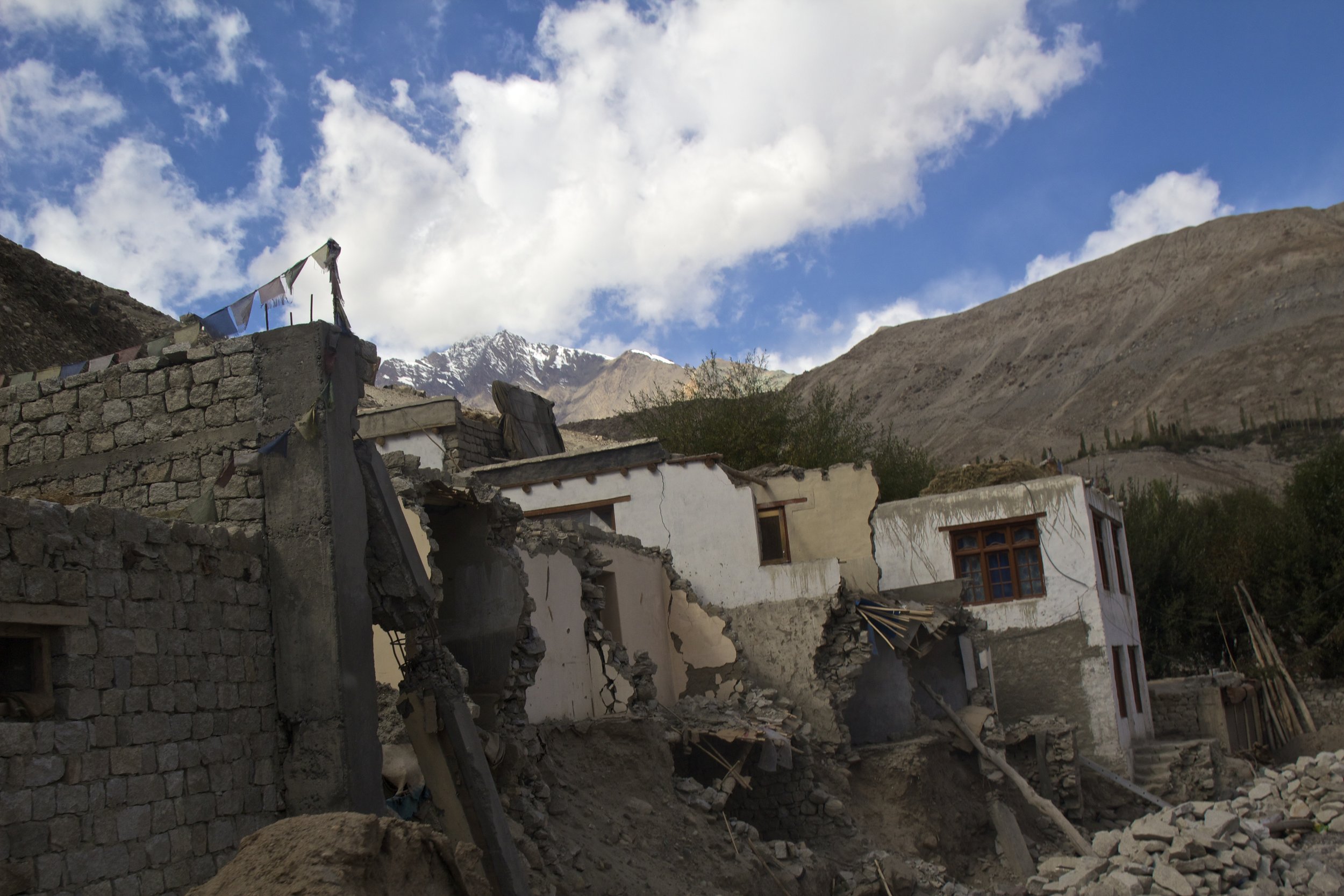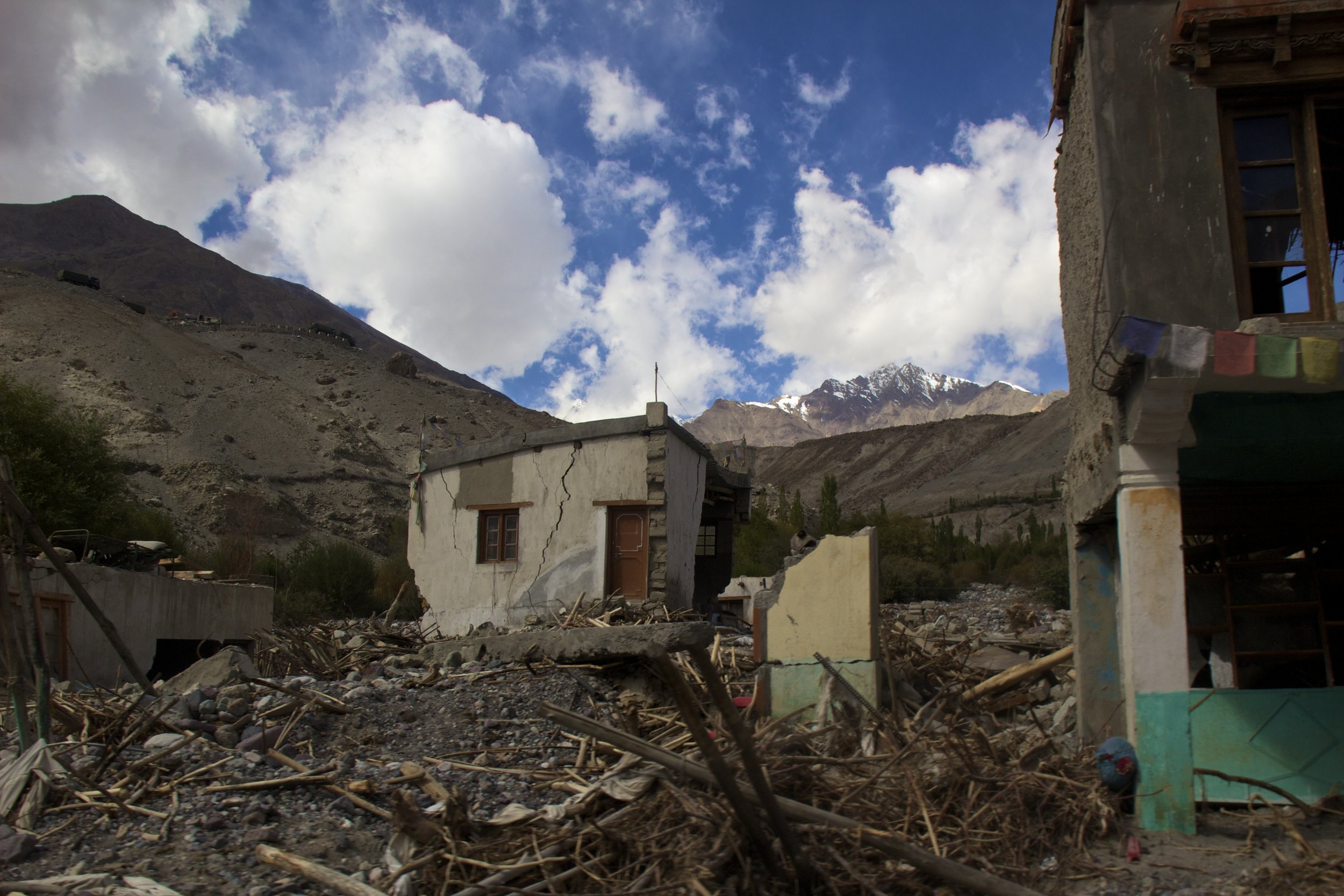At 18,380 feet (or 5,602 meters) above sea level, Khardungla Pass is the highest motor-able road in the world. To put altitude in perspective for you, that's almost 13 times the height of the Empire State Building. It's a little less than the length of 115 (American) Football fields. It is the equivalent to about 3.5 miles. It is also 780 feet higher than Everest Base Camp. It's worth noting however that Khardungla Pass is only the highest motor-able road in the world that we know of. The general consensus in the area seemed to be that there is likely to be a higher road somewhere in Chinese-controlled Tibet. However, not a lot of information escapes those borders, so for the foreseeable future, Khardungla Pass is the top of the world for motorized vehicles. So let's get into it.
Planning Our Ascent
My trip so far had been exclusively to warm places, so I was pretty ill-prepared for this journey. All I had brought with me were 1 pair of jeans, some light sweaters, and a windproof raincoat that had turned out to be a lot less “breathable” than the salesman in Ohio had told me. I had literally shivered myself to sleep the past few nights in Leh, which is only 11,655 feet (3,500 meters) above sea level, so before setting out for Khardungla Pass, I had some shopping to do. I bought a hat, gloves, 2 thermal shirts, thick socks, and some long-johns. I had promised myself I wasn’t going to waste money on clothes that I wouldn’t be able to fit into my bag on the trip home, but the bone-chilling cold of the Himalayas quickly persuaded me otherwise. I also went ahead and put on pretty much every t-shirt I owned. Layering is the name of the game.
We left Leh around sunrise, a little after 6:00am. We hired a jeep through Broken Moon Tours, for a blanket cost of 12,000 INR (184.72 USD). Split 3 ways, with my Indian and British travel companions, my share was 4,000 INR (61.57 USD), which isn’t terrible considering the distance we were about to drive, and how long it would take us. Our driver’s name was Tenzin, and our lives were literally in his hands. I’ve obviously lived to tell the tale, so let me introduce you to this road warrior and his sweet ride:
The Road Out Of Leh
In order to venture outside of Leh into India's sketchy borderlands, we had had to apply for government permits - 650 INR (9.92 USD) each. We had to print out 5 copies of each of our permits to bring on the road. The folks at Broken Moon had acquired the permits for us at no additional cost, so all we had to do was make the copies. Our first check point came a mere 20 minutes outside of Leh. Tenzin took our passports and permits into a sort of police station and returned in a few minutes with our passports and 1 less permit. Our Indian passenger didn’t need to provide any documentation though. Not yet at least.
The roads winding upwards were better than I expected. They were smooth and paved. However, it wasn’t long before the pavement ended, and the snow began. As we slowly bumped our way up the road, the temperature was dropping fast. Since I had to crack a window to prevent my side of the car from fogging up, my hands were frozen solid before long, but it was worth it for these pictures. I’m going to blow these pictures up to be a bit bigger than usual because I think they are just SO pretty.
As we climbed up the mountain, we began seeing some pretty hilarious signs from something called BRO. Half of the signs were in Hindi, but the other half were in English, and they were pretty great. BRO, it turns out, stands for Border Roads Organization. India is a place with a lot of sensitive borders in topographically challenging areas, so BRO works in conjunction with the Indian military to create and secure, good roads in these areas. Khardungla Pass was clearly a work in progress.
The signs they put up were just so ridiculous though that I wrote down some of my favorites. So let me share some of the eternal wisdom of BRO…
“Whether you’re American or African, you’re all human”
“This is the highest road in the world, not a shortcut to heaven – Drive safe”
“East or west, safe driving is the best”
“Everyday is Earth Day”
“Life is short – Don’t make it shorter”
“Be weather-wise, or otherwise”
“Hurry burry spoils the curry” (whatever that means)
“After whisky driving risky”
“Drive slower – Life longer”
“For safe arrivin’ no liquor in drivin’”
“Wherever you drive, arrive alive”
“Highway is not the way to get high”
And my personal favorite…
“Don’t gossip – Let him drive”
Khardungla Pass
Driving Over The Summit
Anyway, eventually we arrived at Khardungla Pass. We had been told that because of the altitude it is unwise to stay up there for more than 10 or 15 minutes. I had had a headache on the way up, but it had passed and I actually felt fine up there, aside from being cold. I had been pounding the water on the way up, as is recommended for these altitudes, so the first thing I did when I got up there after that bumpy ride was pee. That’s right – I urinated on the highest road in the world. What have YOU done lately?
One the way down the other side we passed a few brightly decorated trucks that were clearly having problems making it up the road. The road is steeper on the north side than it is the south side. We gave a honk and they stopped to let us pass. People are a lot more cooperative on roads like this than they are in the rest of India, thankfully. Although, culturally, this was certainly not India. This was Tibet.
The Migrant Laborers Who Maintain Khardungla Pass
We continued down the road and we began passing laborers, dressed like they were on planet Hoth (Star Wars fans, where you at?), trudging up the mountain to start their day’s work. The Indian man we were traveling with had grown up in the military and had a fair bit of insight into what life up here is like. He told us that life here is very hard for these people but that they have very little choice in the matter. Almost none of them are actually from anywhere near here. Most of them come from poor provinces in the lowlands of India such as Bihar and Jharkhand. They are economic migrants here, and have essentially sold themselves to human traffickers for a steady paycheck. Working on these roads earns them approximately 8,500 INR (130.84 USD) per month. That’s about 280 INR (4.31 USD) per day, although I am told that the rate will be raised soon.
These “traffickers” are subcontracted by the Indian military and BRO to provide cheap labor. To be fair, these workers volunteered themselves to be trafficked, and to come here, but it doesn’t change how terrible life is for them here. Humans are not meant to live at this altitude. Spending extended periods of time up here, especially doing manual labor, will significantly shorten these people’s life spans. Our Indian friend told us about the effects that the 2-year assignments (which is the common length for being stationed up here) has on the soldiers. He told stories of people who had spent significant time here just dropping dead at 40. But still, to protect itself against Pakistan, India has heavily fortified the area, and trains its soldiers to fight in conditions like this. Here are some pictures of the migrant laborers, who included an equal amount of men and women:
Breakfast In The Village Of Khardung
Eventually we stopped at a small village called Khardung for breakfast. It was at the foot of the mountain we had just driven over, and it wasn’t much warmer than it had been at the top. It mostly just seemed to be a military outpost, but there was a small settlement of houses as well. Our “restaurant” was a tent, which didn’t do much to change the temperature besides blocking out the sun, but at least they served hot chocolate.
Around the village, and as far up the mountainsides as still had any sort of vegetation poking through the snow, were yaks. There were yaks freaking everywhere. Usually we’d find large groups of them grazing on the tundra grass near a trickling little stream, but other times we’d find them attempting to graze even through the snow. Riding a yak is something that I had hoped to be able to do, but alas, I couldn’t make it happen this time around. I took some pictures though:
Doubling Back
Khardungla Pass From The North
When we made the return trip, it was much later in the day, and thus warmer. I even had the window open for a lot of the way up. We passed a number of laborers operating heavy machinery on the edge of 90 degree cliffs. The cliffs on the drive back down seemed to be a lot worse, because we were driving on the outside lane of the road for most of it.
We had to stop once while the BRO laborers blasted holes in the side of the mountain. The bang echoed off the rock faces around us more powerfully than I had ever heard. Luckily there was not enough snow for there to have been an avalanche… yet.
Terrifying Sidebar
Himalayan Cloudbursts
Himalayan cloudbursts were described to me as "a river falling from the sky." Skeptic that I am, I couldn't help but roll my eyes at this description.
A river falling from the sky? Get real.
But the locals wore grave expressions on their faces as they insisted the legitimacy of that description. I laughed it off.
A few days later, on the northern side of Khardungla Pass, we were driving down the Shyok River when we passed through a small town that had been absolutely ravaged. Houses that had been built out of concrete, bricks, and metal, lay in ruins. It actually looked like bombs had been dropped on it. I was told that a cloud burst had happened here. Looking around at the twisted pieces of metal and shattered blocks of cement, I was stunned.
...
So, can you tell me a bit more about this river falling from the sky?
Here are a couple pictures of that poor little town...
Himalayan cloudbursts occur when there is a dense build-up of water inside a cloud, but excess electrostatic forces prevent precipitation. The effect is that a cloud becomes like a giant water balloon. Eventually the water being carried will get too heavy and the electrostatic forces will give out. When this balloon bursts, God help anybody that is underneath, or down-stream. Cloudbursts normally don't last any more than a few minutes, but, during this short time, upwards of 20,000 metric tons of water can be dumped over one square mile or less.
In all of my research, most sources I found insisted that these cloudbursts are extremely rare, but this directly contradicted what I had told by the Himalayan locals. According to them, cloudbursts are relatively common in Himalayas during the warmer months. The real question is whether or not anybody is underneath when they happen. If not, then what's the difference? As terrifying a concept as it is, the idea that this phenomenon could be happening regularly out in the remote reaches of the Himalayas does a lot to reaffirm my faith in the unknown. Planet Earth still has a few secrets yet.
Peter’s Perspective
I’m a guy who has devoted most of his travels to experiencing other cultures, and interacting with people who are different from myself, so the Himalayas were an interesting break for me. It’s a humbling place to be, because when you are here, you really are just 100% at the mercy of mother nature. The Himalayas are just SO BIG. No picture or video will ever do it justice. Up in those mountains, you are smaller than small. If you slipped and fell, nobody would even hear it, and the world would just keep turning. You become acutely aware of just how fragile your body is. Death is a distinct possibility if you don’t respect the mountains. I’m a pretty out-there, driven guy, so I don’t like not being able to do things, but being in the Himalayas so close to winter forced me to take a step back and admit that I was in over my head.
I did some cool stuff, which I will tell you about in the ensuing posts, but I didn’t pit myself against the elements like many of the people here were doing. I came up here on sort of a whim of course, and was barely even prepared to do what I did, so I can’t claim to be too disappointed in myself. But I was inspired. I really admired everybody I met here for the treks and journeys they were doing through the mountains. This is a really hard place to be, after all. I met a Slovenian guy here who, in a conversation about safety up here, said something like “Yeah, you really need to be careful up here… because I’ve seen people cry”. I chuckled and asked who he had seen cry. “Well… okay, actually it was me”. I always laugh remembering the delivery of that line. That's pretty real though.
Anyway, I am going to come back at some point in the future and do something more ambitious. The people I’ve met out here have inspired me to follow in their footsteps.
In the mean time though, I’ll settle for driving to Pakistan. (spoiler alert)








































